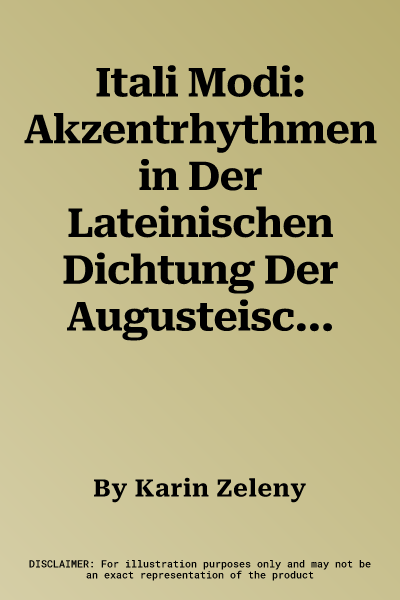The thesis of accentual rhythm, presented in this study for the first
time, according to which normal word accents are responsible for the
inner rhythmical structure of Latin poetry, opens a completely new path
in metrical research by examining verses from a musicological point of
view. Ancient testimony proves that word accent (according to modern
linguistics which are not seriously challenged nowadays it was a stress
accent) is fundamental to the Latin language, and that Latin poetry was
generally recited to listeners rather than written for readers. In
verse-analysis acoustically perceptible factors therefore are of
particular interest. An impressive argument is provided by the remaining
poetry itself. Regulations of verse clausulae and caesurae have already
been widely discussed in metrical research. They all concern word
boundaries in the verse. But what was the purpose of those regulations?
If they should act upon the ear rather than upon the eye, then it is
safe to assume that they were aimed at the regular distribution of word
accents, which according to the law of the penultimate depend on the
word endings. The resulting rhythms however are unfamiliar to modern
occidental ears, in that they do not correspond to the common scheme of
two or three beats to the bar. If one recites the long and short
syllables in the correct ratio of 2:1 and uses the word accents as
downbeats, the result thus derived is additive rhythms (comparable to
the Central-European Zwiefacher, Indian Talas, West African
Timeline-patterns, etc.), which are variable according to the variously
located word boundaries and accents (e.g. the hexameter of 24 time units
regulated by clausula and caesurae has only three main types with
different basic timelines). This variability is consistent with ancient
concepts of rhythm: according to Quintilian 9.4.55 the rhythm of Latin
prose and verse (!) never runs on monotonously without variety,
therefore any kind of ictus (the general stressing of first syllables of
the verse foot, whereas word accents are ignored; in school it is useful
to distinguish long from short syllables) in normal reciting of verses
must be vehemently rejected. The quantitative system of verse feet is
only a grid into which the words are inserted, but which in itself is
not perceivable in reciting. It can be compared to a knotted carpet: The
pattern is visible on the front side, and the underlying structure can
still be seen on the back side. Anybody giving weight to the ictus would
therefore be apt to display a carpet backwards. One of the fascinating
results of this study is the fact that accentual rhythms are connected
to the content and form of the text. Thus Ovid signals phrase endings
inside the hexameter by certain rhythms, which take on the function of
modern punctuation.

